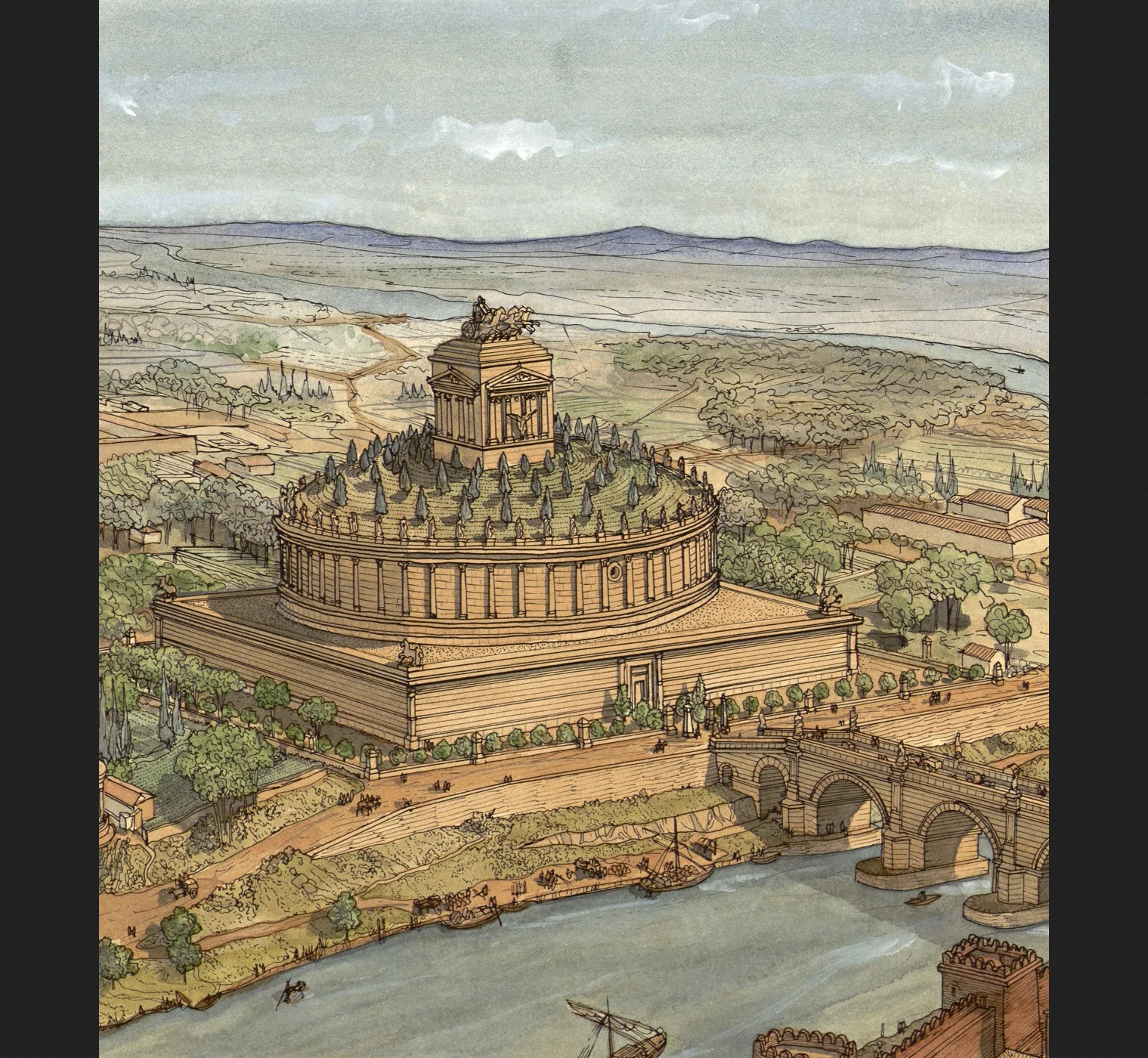Hadrian’s Mausoleum – Design, Golden Quadriga, Imperial Burials
Origins of Castel Sant'Angelo as Hadrian’s tomb: design choices vs Augustus, golden quadriga, helical ramp ritual, and imperial interments to Caracalla.

Hadrian returned to Rome late in life with a global gaze, translating experience into a mausoleum that saluted Augustus while asserting his own aesthetics.
1. Augustan Precedent, Hadrianic Reply
- Proportional respect: kept overall mass below Augustus’ tumulus scale, but intensified decorative program.
- Summit program (lost): ancient sources and later reconstructions suggest a gilded quadriga with Hadrian as charioteer—imperial apotheosis in motion.
2. Construction & Completion
- Start: c. 135 CE; completion under Antoninus Pius in 139 CE after Hadrian’s death in 138.
- Materials: concrete core, brick facings, marble revetments, bronze ornament—palimpsest echoes remain in later fortress skin.
3. Processional Choreography
The helical ramp staged a dignified ascent: family, priests, and guards spiraled towards the central chamber, aligning ritual movement with cosmic symbolism of circular return.
4. The Imperial Burials
| Period | Interments | Notes |
|---|---|---|
| 139–161 CE | Hadrian, likely Vibia Sabina, then Antoninus Pius | Dynastic continuity secured |
| 2nd–3rd c. | Successive Antonine/Severan members | Fragments in texts/archaeology |
| 217 CE | Caracalla (traditionally last) | End of imperial ashes here |
5. Loss & Spoliation
Sacks and later reuse stripped bronzes and precious urns; funerary contents dispersed—what survives is the armature of a once-sumptuous machine for memory.
6. Reading the Present for the Past
- Drum mass and ramp survive within the fortress; terrace vantage hints at where the statuary crown once ruled the skyline.
Bottom Line
Begin your visit with the tomb: seeing a fortress is richer when you first imagine a shimmering quadriga atop a serene imperial memorial.
About the Author

Telmo Rolando
I wrote this guide to help you explore Castel Sant’Angelo with confidence — clear tickets, smart routes and the highlights you shouldn’t miss.
Tags
Comments (0)
Loading comments...